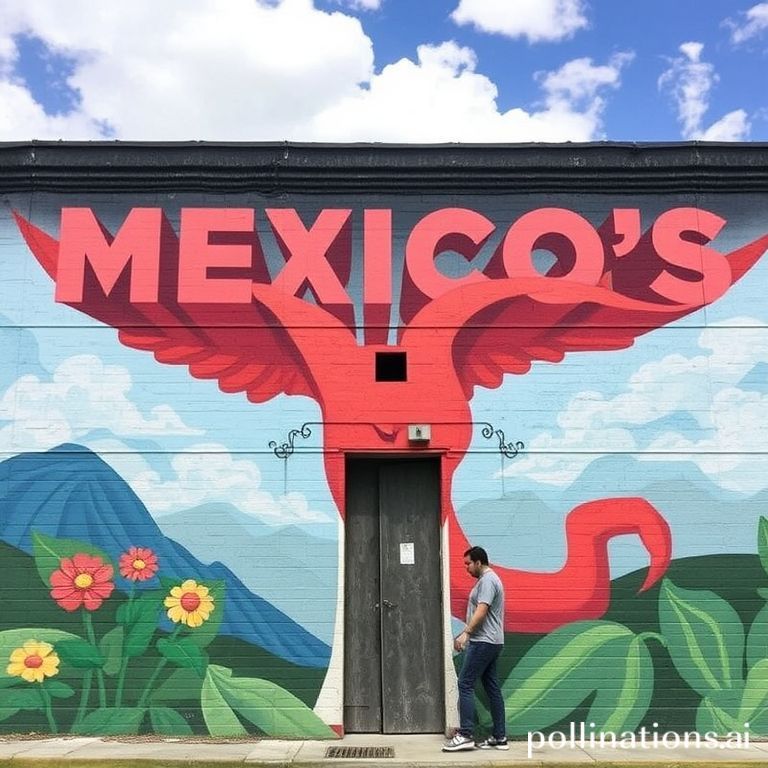Mexico is a vibrant tapestry of color, history, and culture, and nowhere is this more evident than in its stunning murals and street art. From the grand works of Diego Rivera to the contemporary expressions of local artists, the walls of Mexico tell stories that resonate deeply with its people and visitors alike. Exploring these art forms offers a unique lens through which to understand the nation’s rich heritage and its dynamic present.
This journey into Mexico’s murals and street art is an exploration of its soul, a visual narrative that captures the spirit of a nation. Join us as we delve into the history, significance, and beauty of this captivating art form that transforms ordinary streets into extraordinary galleries.
A History Etched in Paint: The Muralist Movement
The Mexican Muralist Movement, which flourished in the early to mid-20th century, was a pivotal moment in the country’s artistic and political landscape. Artists like Diego Rivera, José Clemente Orozco, and David Alfaro Siqueiros used public spaces as their canvas, creating monumental murals that depicted themes of social justice, revolution, and national identity. These murals were not just art; they were powerful statements that aimed to educate and inspire the masses.
Diego Rivera: The Master Storyteller
- Diego Rivera’s murals, found in iconic locations like the National Palace in Mexico City, are renowned for their intricate detail and historical narratives. His works often depict scenes from Mexican history, highlighting the struggles of the indigenous people and the fight for independence.
- Rivera’s ability to blend historical accuracy with artistic expression made his murals both educational and aesthetically captivating. His legacy continues to influence artists and inspire social commentary through art.
Orozco and Siqueiros: Voices of Dissent
- While Rivera focused on historical narratives, José Clemente Orozco and David Alfaro Siqueiros often tackled more controversial and politically charged themes. Their murals reflected the harsh realities of social inequality and the ongoing struggle for justice.
- Orozco’s works, characterized by their dramatic intensity and powerful symbolism, can be found in places like the Hospicio Cabañas in Guadalajara. Siqueiros, known for his innovative techniques and use of modern materials, left a lasting impact with his dynamic and politically charged murals.
Street Art Today: A Contemporary Renaissance
Today, Mexico’s street art scene is thriving, with artists from all walks of life contributing to the country’s visual landscape. From vibrant graffiti to intricate stencil work, contemporary street art in Mexico reflects a diverse range of styles and themes. This modern renaissance builds upon the legacy of the muralist movement while embracing new forms of expression.
Oaxaca: A Canvas of Color
Oaxaca is particularly renowned for its vibrant street art scene. The city’s walls are adorned with colorful murals that reflect the region’s rich cultural heritage, indigenous traditions, and contemporary social issues. Exploring the streets of Oaxaca is like walking through an open-air museum, where every corner reveals a new artistic surprise.
Mexico City: A Metropolis of Murals
Mexico City, as the nation’s capital, boasts a diverse and dynamic street art scene. Neighborhoods like Roma and Condesa are known for their eclectic mix of murals, graffiti, and urban art installations. Artists in Mexico City use their work to address a wide range of issues, from environmental concerns to social justice and cultural identity.
The Significance of Murals and Street Art
Murals and street art in Mexico are more than just decorations; they are powerful forms of communication that reflect the country’s history, culture, and social consciousness. These artworks serve as a visual record of Mexico’s past, a commentary on its present, and a vision for its future. By transforming public spaces into vibrant canvases, murals and street art democratize art, making it accessible to everyone.
- Murals act as educational tools, teaching viewers about Mexican history, indigenous cultures, and social movements.
- Street art provides a platform for artists to express their opinions on current events and social issues, sparking dialogue and raising awareness.
- The vibrant colors and striking imagery of murals and street art enhance the beauty of urban environments, creating a sense of community and pride.
Conclusion
Exploring Mexico’s murals and street art offers a fascinating glimpse into the nation’s heart and soul. From the historical masterpieces of the muralist movement to the contemporary expressions of today’s artists, these artworks capture the essence of Mexican identity and culture. Whether you’re wandering through the streets of Oaxaca or marveling at the grandeur of the National Palace in Mexico City, you’re sure to be inspired by the beauty and power of Mexico’s vibrant art scene.
If you enjoyed this article, don’t forget to explore more inspiring stories on Life in Mexico!
IMAGE: A vibrant and colorful street mural in Oaxaca, Mexico. The mural depicts indigenous people in traditional clothing, surrounded by stylized plants and animals. The style is folk art meets contemporary street art. The scene is bathed in warm, natural sunlight, creating a cheerful and inviting mood. The colors are bright and saturated: reds, blues, yellows, and greens dominate. The overall feeling is one of cultural pride and artistic expression.


